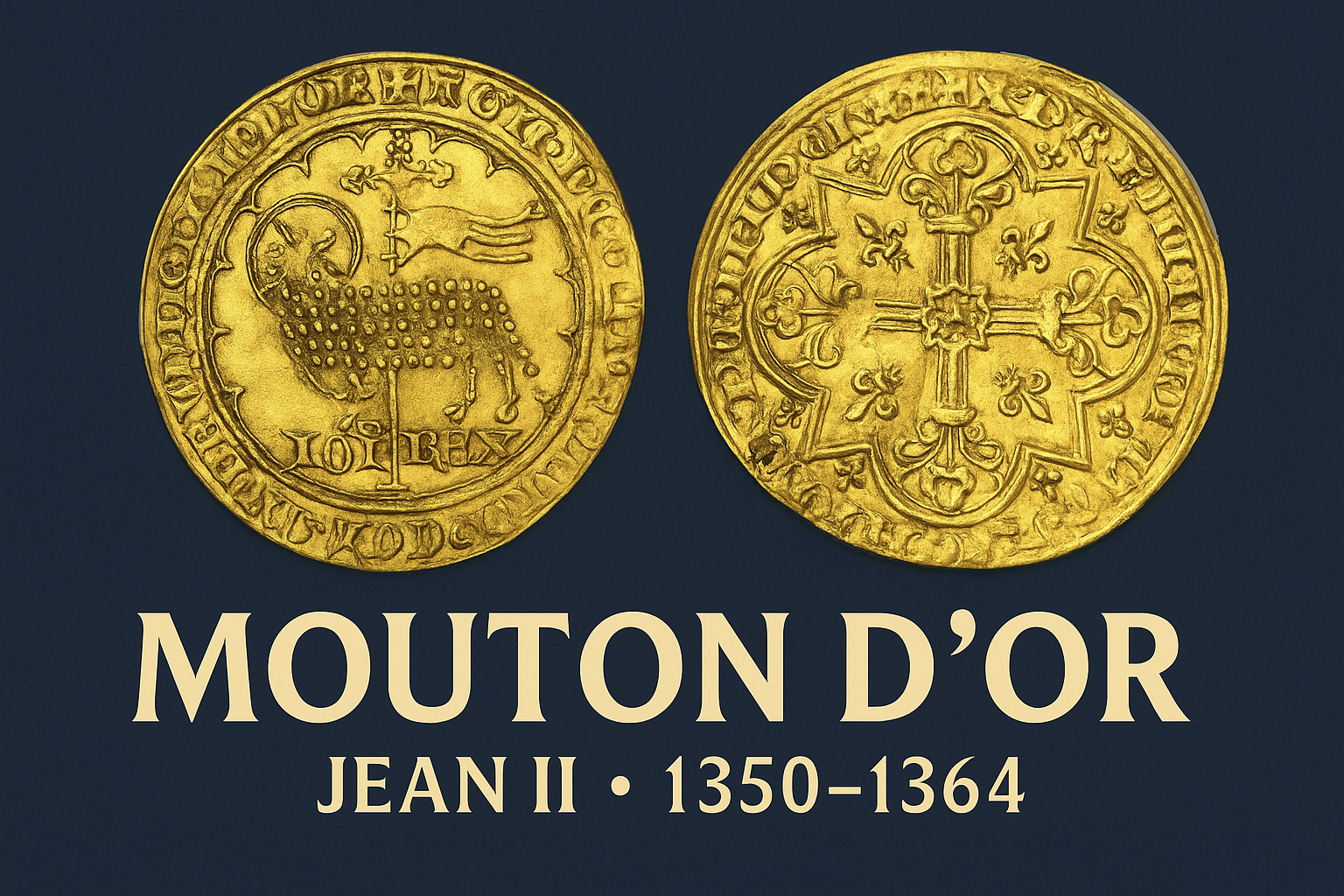The Golden Lamb of France: A Timeless Treasure from the Age of Chivalry

In the world of rare coins, some pieces transcend mere monetary value and become living testaments to the eras they come from. One such coin is the Mouton d'Or, or 'Golden Lamb,' minted during the reign of Jean II of France (1350–1364). Whether you're a seasoned collector, a history enthusiast, or an investor exploring tangible assets, this 14th-century masterpiece offers both aesthetic beauty and long-term value.
Let’s explore the story behind this extraordinary coin and why it continues to captivate collectors worldwide.
1. A Coin of Faith and Power
The Mouton d'Or was struck during one of the most turbulent periods in French history—the height of the Hundred Years’ War and the ravages of the Black Death. Amid political chaos and military defeat, Jean II issued this coin as a beacon of hope and stability.
The obverse features the “Agnus Dei,” or Lamb of God, with a nimbus and a cross-staffed banner—a powerful Christian symbol of sacrifice and salvation. Surrounding it is the Latin inscription “AGNUS DEI QUI TOLLIT PECCATA MUNDI MISERERE NOBIS” (Lamb of God who takes away the sins of the world, have mercy on us).
On the reverse, a floriated cross rests within a quatrefoil, with smaller fleur-de-lis filling the corners—clear symbols of divine and royal authority. The surrounding text reads “XPC VINCIT XPC REGNAT XPC IMPERAT” (Christ conquers, Christ reigns, Christ commands), underscoring the religious fervor of the period.
This isn’t just currency—it’s medieval propaganda in gold.
2. The Historical Legacy of King Jean II
Known as 'Jean the Good,' King Jean II’s reign was anything but peaceful. In 1356, he was captured at the Battle of Poitiers and held for ransom by the English. The price of his freedom? Three million gold coins.
To pay this astronomical sum, France introduced new coinage, including the famed “Franc à cheval.” But before that, the Mouton d'Or was one of the most valuable coins in circulation—worth approximately one livre tournois at the time.
Jean II’s decision to return to captivity in England after his son fled hostage duties became a legend in royal chivalry. He would die in London in 1364, never regaining his kingdom. Yet, his legacy survives in coins like the Mouton d'Or, a lasting reminder of royal honor and the cost of sovereignty.
3. Investment Appeal: Rare, Beautiful, and Historically Significant
The Mouton d'Or isn’t just a collector's dream—it’s an exceptional investment asset. High-grade examples are incredibly rare, with some receiving MS63 or higher from PCGS or NGC. A specimen in MS63 condition recently sold for over ¥1.5 million (approximately $10,000 USD), a clear indicator of growing demand.
Key reasons collectors and investors love this coin:
-
Extreme Rarity: Minted over 650 years ago, surviving examples in pristine condition are few and far between.
-
Historical Significance: Directly linked to the Hundred Years’ War and the political turmoil of medieval France.
-
Aesthetic Appeal: The divine lamb, radiant cross, and medieval script make it a miniature work of sacred art.
-
Value Appreciation: As interest in medieval European coinage grows, so does the Mouton d'Or’s potential.
Coins like this serve as both historical artifacts and tangible stores of wealth. In uncertain economic times, they represent a stable and culturally rich alternative to conventional investments.
Final Thoughts
Whether you're new to numismatics or expanding a blue-chip collection, the Mouton d'Or offers a compelling blend of history, beauty, and financial potential. It embodies a pivotal era in European history—when kings were captured, kingdoms ransomed, and faith minted in gold.
If you’re fortunate enough to acquire one, know that you’re holding not just a coin, but a story—etched in metal, sealed in time, and destined to shine through the ages.
